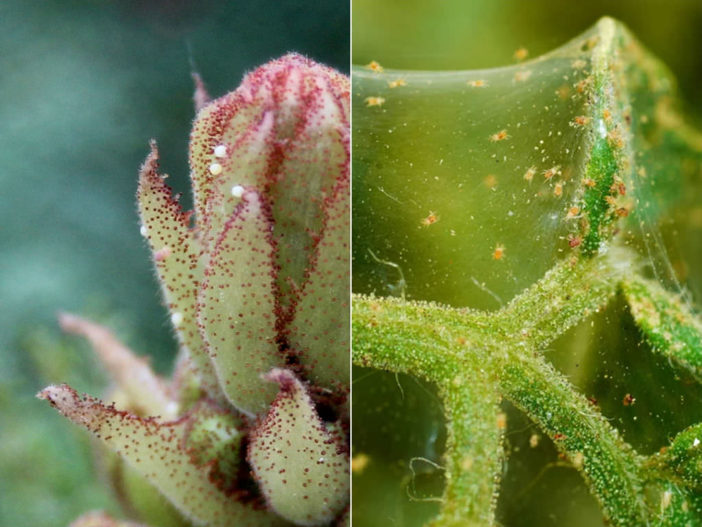Not quite spiders, not quite mites; these bugs are the worst of two worlds. They are tiny, and you could easily overlook them if you are not looking for them on your succulents. Spider mites love succulents because they harbor a high concentration of sweet sap they like to suck out. If your cactus is infected, you will see yellow and rust-colored spots on the stem, which can cause the plant to become weak and infected with other problems.
It is important to know that spider mites are not typical bugs like most pests. Instead, they are a type of arachnid, like spiders, so regular bug sprays and pesticides for bugs will not kill them. Those pesticides may kill the good insects that feed on spider mites. Therefore, you will need to deal with spider mites more specifically.
How to Control
If you see white webs on your plant, clean them off immediately. If you see the spider mites themselves, brush or pick them off and dispose of them away from the plant. You may even want to remove the entire plant to prevent the mites from getting onto your other plants.

If your spider mite problem is bad, try a natural "systemic insecticide." You either add mix when you water your plants or unpot and wash them in the insecticide solution. After using the treatment for a couple of weeks, the plants will absorb the poison into their system so that when bugs suck out the plant sap, they will be poisoned. Use these systemic insecticides very sparingly because they are pretty potent and may damage your plants if you use too much.
If your succulents grow outdoors, use a strong jet stream sprayer to blast the mites off.
Predatory mites will eat the bad spider mites that are dining on your plants. But, of course, this solution is better for outdoor plants because you will not want any bugs in your house.
Source: juicykits.com
Links
- Succupedia: Browse succulents by Scientific Name, Common Name, Genus, Family, USDA Hardiness Zone, Origin, or cacti by Genus